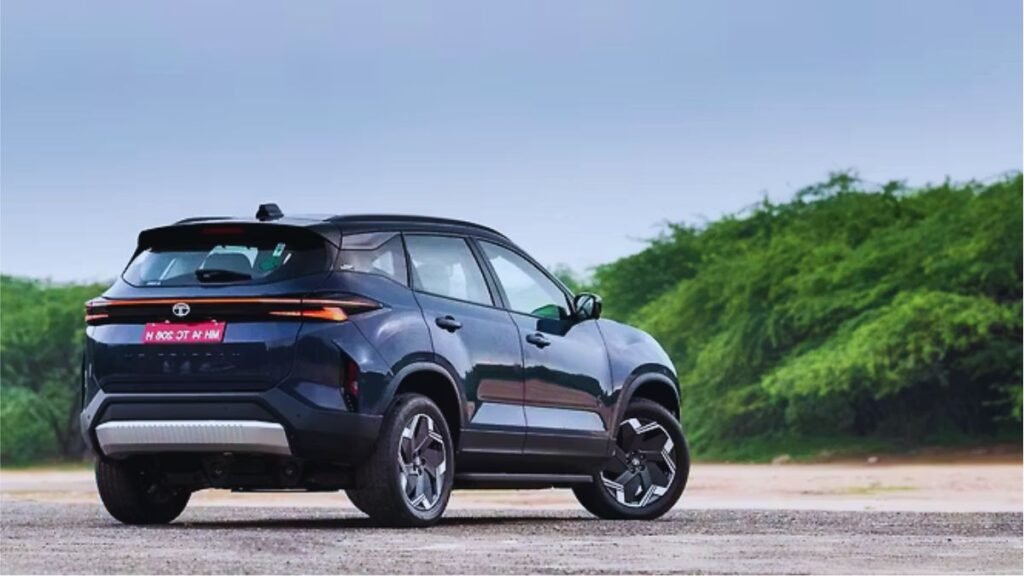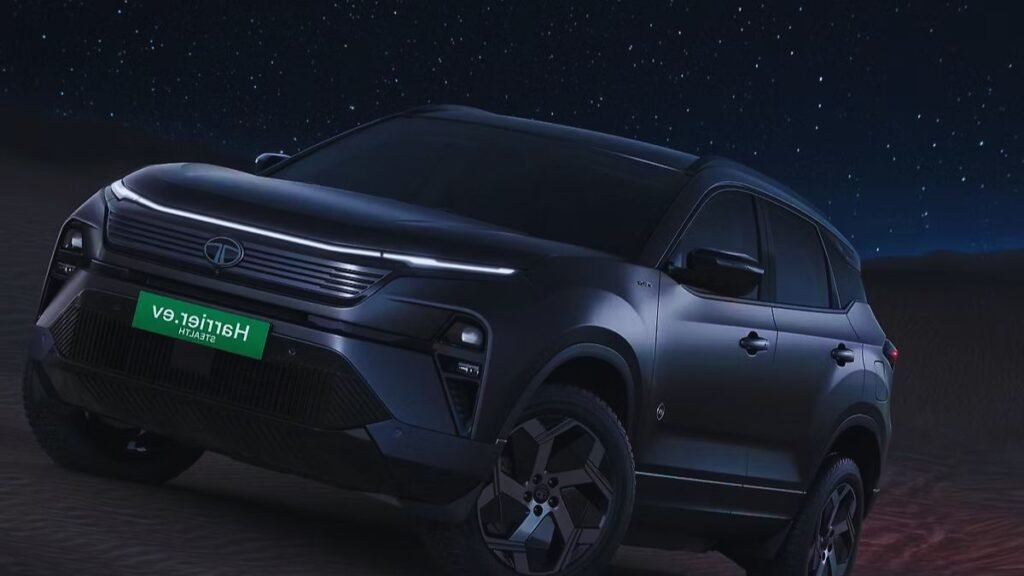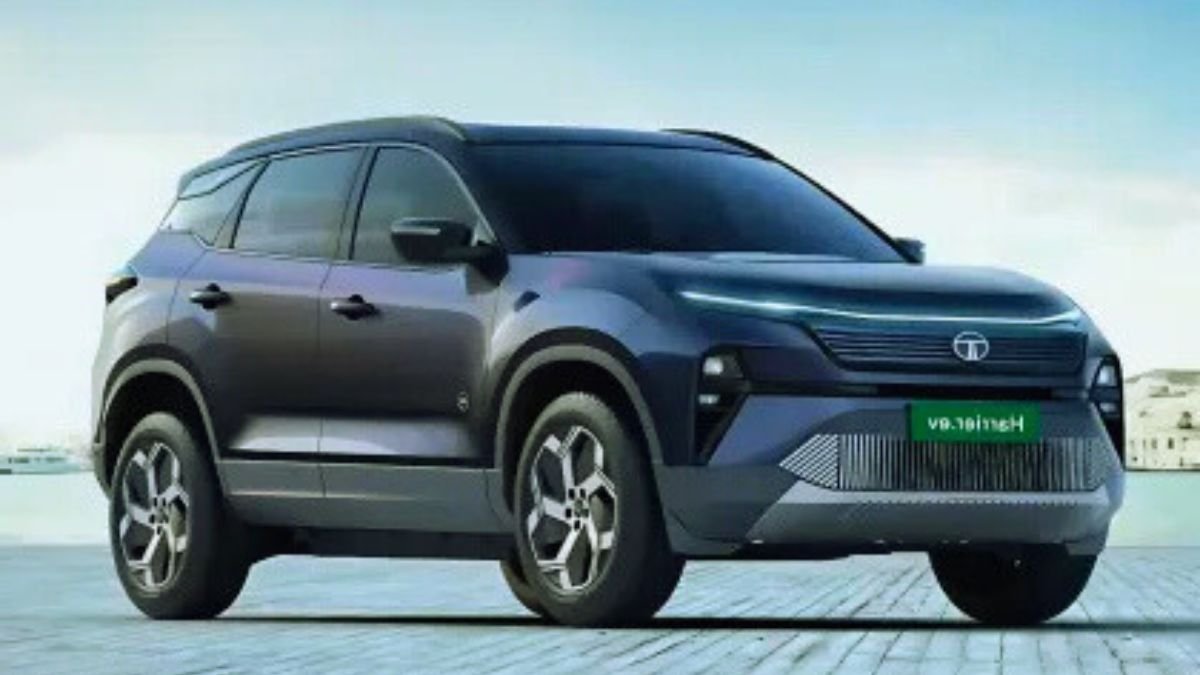Hello friend! Hope you’re doing great today. I’m super excited to share something really amazing with you. Today, let’s talk about one of the most talked-about electric SUVs in India — the Tata Harrier EV. You know, the car world is changing fast, and electric vehicles are becoming the new trend. So, brother, let’s know something more interesting about this powerful EV that everyone is waiting for!
When Tata first showed the Tata Harrier EV, I honestly thought — wow, finally an Indian brand giving strong competition to international car makers. It’s not just an EV, it’s a stylish, bold, and futuristic SUV that looks premium and performs even better. Do you know it’s very special or unique that this car is made in India, yet feels truly global?

Design and Looks
So friend, the first thing that catches your eye is the design. The Tata Harrier EV looks stunning from every angle. It carries that big SUV stance like a boss. The front grill is closed because it’s electric, giving it a clean and modern appearance. The LED lights and the connected tail lamps make it look super futuristic. I saw it once in a showroom, and honestly, people couldn’t stop staring. The car is available in multiple colors like Midnight Black, Tropical Mist, Fearless Red, Lunar White, and Pebble Grey. Personally, I like the Fearless Red one — it just gives that bold road presence. The matte finish options are also going to attract young buyers for sure.
Interior and Comfort
Now, coming to the inside — it’s pure class! When I sat inside the Tata Harrier EV (the regular one), I already liked its comfort, but the EV version takes it to another level. The dashboard is neatly designed with a big touchscreen, digital instrument cluster, and soft-touch materials everywhere. The seats are wide and supportive — perfect for long drives. One thing I really loved was the panoramic sunroof. It gives that open, airy feeling. And the ambient lighting adds a touch of luxury, especially during night drives. Tata has worked on noise cancellation too, so the cabin feels quiet and peaceful — exactly what you want in an EV. So brother, let’s know something more interesting — Tata has given smart tech features like connected car technology, voice commands, and even remote access through your phone. You can pre-cool or pre-heat the cabin before entering the car. Isn’t that amazing?
Performance and Range
Okay, now the most exciting part — the power and range. The Tata Harrier EV comes with two battery options — one around 65 kWh and the other around 75 kWh. Tata claims that it can go up to 620 km on a full charge, which is mind-blowing for an SUV of this size. Imagine driving from our town to Delhi without worrying about charging! Do you know it’s very special that Tata is using their Gen-2 EV platform here, which is more efficient and powerful than before? It also supports all-wheel drive (AWD) — so both front and rear wheels can get power. That means better grip, control, and fun on highways and hills. Charging is quite fast too — it supports DC fast charging which can juice up the battery from 10% to 80% in less than 40 minutes. For normal home use, AC charging will take longer, but for daily needs, it’s perfectly manageable.
Safety and Features
Tata cars are already known for their strong build quality, and Tata Harrier EV is no exception. You get 6 airbags, ABS with EBD, ESP, hill hold control, and even ADAS features like lane departure warning, forward collision alert, and adaptive cruise control. So yes, it’s not just a car — it’s a smart guardian on wheels. Friend, you’ll love that Tata has used a strong body structure that gives you that solid “thud” sound when you close the door — feels safe and premium. I’ve always trusted Tata for safety, and Harrier EV continues that reputation.
Price in Our Town
Now comes the most important question — kitne ka hai bhai ye? The expected price of the Tata Harrier EV starts from around ₹21.5 lakh and goes up to ₹30 lakh (ex-showroom). In our town, after taxes and registration, it might come to around ₹23–35 lakh on-road depending on the variant. Honestly, it’s a fair deal considering what you’re getting — a powerful EV SUV, long range, and premium features. Compared to foreign EVs, it still feels more value for money. Of course, it’s not cheap, but for those looking for a long-term, eco-friendly car with performance and comfort, it’s a great investment.

Real-Life Example
Let me share something from my friend Rohan. He drives around 60 km daily to his office and back. He owns a diesel Harrier right now, and he told me he spends around ₹12,000–₹15,000 per month on fuel. When he calculated the Harrier EV charging cost, it came to around ₹2,500 per month for the same distance. That’s a saving of ₹10,000 monthly! Over a few years, that’s a lot of money. Plus, it’s pollution-free. After hearing this, even I felt like shifting to an EV soon.
Why It’s Worth It
So brother, here’s my point of view — if you’re planning to buy an SUV in 2025, the Tata Harrier EV deserves a strong look. It’s made in India, looks fantastic, has long range, and offers top-notch features. Plus, it gives you the pride of owning something futuristic and environment-friendly. Do you know it’s very special that Tata is one of the few Indian brands challenging global companies in the EV space? That itself makes me proud. The way Tata is evolving with design and technology is just commendable.
Read more Maruti Suzuki Victoris – The Stylish Hybrid SUV for Modern India —
Final Words
My dear friend, if you ask me whether I would buy it, I’d say yes — if budget allows, definitely. Because this is not just a car, it’s a symbol of how far our Indian auto industry has come. The Tata Harrier EV gives power, comfort, and peace of mind, all packed in one solid machine. If you love long drives, want to save fuel, and care for the environment — this one’s for you. It’s stylish, strong, and future-ready. So friend, what do you think? Would you take this electric beast for a spin around our town roads? Because trust me, once you do — you’ll never want to go back to petrol again.






